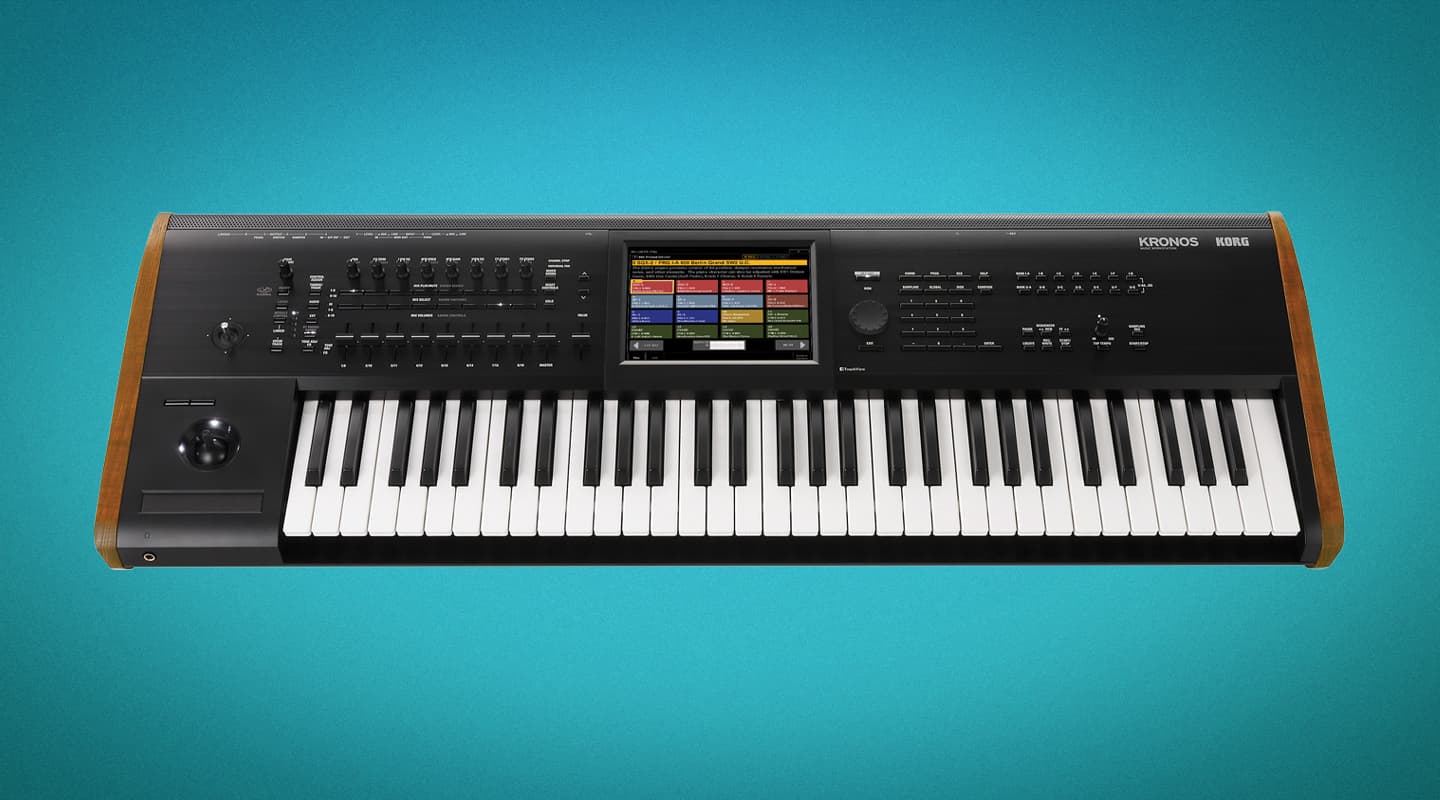
Review: Korg Kronos Keyboard Workstation
Korg’s analogue synth recreations are a gorgeous reminder of the past, but its Kronos workstation shows what’s possible when you focus on the future.
On many occasions these pages have been plastered with my affection for Korg instruments. From the lowliest, almost toy-like analogue devices such as the Monotron units and Volca range, to the faithful vintage reproductions such as the MS-20 mini and recent Arp Odyssey, all the way through to the no-holds-barred, full-flight workstations, Korg instruments always exude gloriously lush sonics.
In my view, Korg has its finger well and truly on the pulse of contemporary synthesis. Not only does the company create progressive and advanced synthetic instruments, it also unashamedly reinvigorates the vintage machines from 40 years ago — all to the rapturous applause of analogue diehards the world over.
TOP OF THE STABLE
At the upper end of the Korg synthesis stable is the new Korg Kronos, and it’s the 73-note version of this monster that’s inveigled its way into my man-cave for some appraisal. The most recent Kronos workstation iteration adds a swathe of new features to the previously established model, and it’s these I’ll primarily focus on. The key-bed is Korg’s RH3 weighted hammer-action keyboard — the same ivories used in Korg’s top-shelf piano models. It’s positively delightful to play. Korg’s keys have come a long way since the company stopped using Yamaha key-beds. The Kronos comes in three keyboard styles: both the 88- and 73-note models use the RH3 key-bed, while the 61-note model uses the ‘Natural Touch Semi-weighted’ key-bed with its more synth-like action.
Aesthetically there are some changes such as a more legible silk-screening, and the rather saucy wooden end-cheeks. They’re real timber! You can tell because they’ve been shaped and chamfered. There are also gold-plated I/O jacks on the rear, if that type of thing excites you. And that’s fine if all your cable jacks are gold plated too, but kinda pointless if they aren’t. Google ‘galvanic corrosion’ and you’ll see what I’m alluding to.
The Kronos includes no less than nine discrete synthesis engines. Kicking off the list is the SGX-2 piano engine (upgraded from the previous SGX-1). This engine originally boasted German and Japanese grand pianos, but now adds a 9GB Berlin grand with dedicated soft pedal samples, and all-new sympathetic string resonance — the most lavish piano I’ve heard from a workstation.
For a brief roundup of the sound engines, there’s the EP-1 MDS electric piano engine, the PCM sample-based HD-1 synthesis engine, CX-3 Tonewheel Organ, AL-1 ‘High-Fidelity’ analogue modelling, the MOD-7 Waveshaping VPM synth, STR-1 ‘Plucked Strings’ physical modelling, and the sensational MS-20EX and PolySixEX Legacy analogue modelling engines. There’s so much scope with this vast range of synthesis engines that it’s no wonder the Kronos is often referred to as the most powerful synthesiser on the planet.
Of course, sampling is also possible, either internally for recapturing sounds or even sequencer tracks, or for banging in external sound sources. The sampling system also offers direct ripping of audio from audio CDs, and loads a multitude of sample formats including Korg format, Akai S1000/S3000 data (with advanced program parameter conversion), SoundFont 2.0, AIFF, and WAV formats. Sampling is aided by the speed of a solid state drive, with the capacity to store a massive 62GB of sample data. That’s in addition to the 21GB of preset waveforms. A new ‘Load Required Samples’ command now loads any required samples for a song or combination in a single step. Far superior to wading through each program and loading them.
NEED TO KNOW
TOUCHING INCLUSIONS
New to the current model Kronos is a system-wide ‘Touch and Drag’ system of editing via the eight-inch colour TouchView screen. This is especially useful when editing the more analogue-style synth engines as you can drag virtual patch cables around on the screen — much like the snapping interconnects in Propellerheads’ Reason. Equally as cool is the new ability to edit programs while in combination or sequencing mode, all while still hearing the other programs used within.
There are also new banks of sounds tied to popular song titles which are squarely aimed at the cover band fraternity, my favourite of which was ‘Take On Me’. It’s quite a hoot spinning through these presets. Speaking of which, programs and combinations can be arranged into set-lists for fast retrieval from the touchscreen. They can also be colour coded for more intuitive selection — ideal in performance situations. While you’re arranging your program ‘slots’ you can add comments to each program or set-list using a standard USB qwerty keyboard. In fact, anywhere text can be inputted into the system can be facilitated with a ‘proper’ keyboard. Finding programs has also been made easier, with the option to find sounds on a per song basis rather than simply by program name, and a new system wide search.
TOTAL EFFECT
Some new effects make the upgrade. The new Vintage effect category includes 12 effects based on the CX-3 and EP-1. Classics such as the Small Phase and Vox Wah, are now available as insert, master, and as total effects.
Korg supply a freely downloadable editor for the Kronos, covering all parameters. It’s utterly comprehensive and even includes support for functioning within your DAW. Both VST and AU plug-in formats are supported, and, both MIDI and audio can be sent to and from your DAW via a single USB cable saving unnecessary cable clutter and negating analogue cabling completely.
Of course the Kronos doesn’t come cheap, with the 61-note model weighing in at $4499, through to the 88-note model at $5999. But when you consider the massive waveform library and compare the Kronos to previous and exorbitantly-priced workstations such as the Oasys, the Kronos is a keenly priced and incredible package. Most powerful synthesiser on the planet? I’ll back that claim wholeheartedly.
















RESPONSES